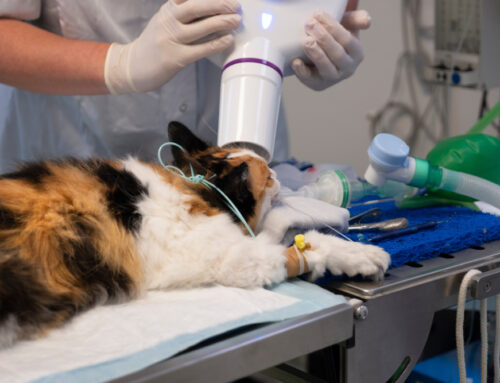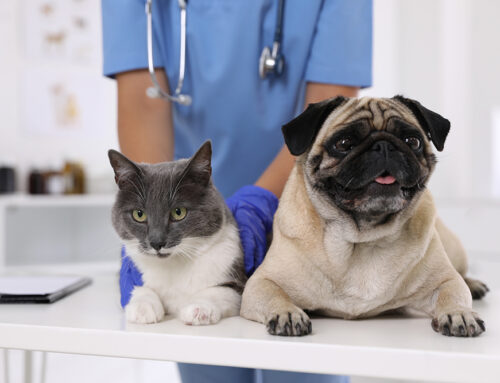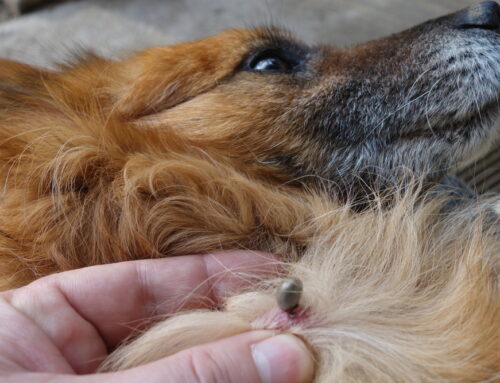When your pet’s Star of Texas Veterinary Hospital veterinarian recommends blood work, that may sound like a good idea. But a few days later, as you stare at a paper or screen full of acronyms, numbers, bars, and charts, you no doubt are left wondering what they all mean.
What is blood work really good for, and what can you learn from it? Find the answers and more in this guide to solving the pet blood work puzzle from Star of Texas Veterinary Hospital.
When is blood work beneficial for pets?
Blood work isn’t only for sick pets—in fact, it’s commonly recommended at routine wellness exams as a preventive screening. Pets can’t tell us where they hurt and instinctively hide illness and weakness. In these instances, blood work provides valuable clues that aid in diagnosis.
In addition to annual screenings, blood work is often recommended for specific situations, including:
- Surgery or dental cleaning — Blood work ensures your pet is healthy enough to go under general anesthesia.
- Emergencies — These include toxin ingestion, trauma, bloat, and heat stroke.
- Sick pet visits — Blood work results can help our veterinarians diagnose an unexplainable illness.
- Senior pets — As pets age, they’re more likely to experience degenerative conditions, which annual or semi-annual blood work can catch in their earliest stages.
- Monitoring — If your pet is receiving long-term medication or suffering from a chronic medical condition, serial blood work is used to determine their status and whether a treatment change is necessary.
What’s included in your pet’s blood work
Although countless specialized blood tests are available, standard or basic blood work includes two panels—the complete blood count (CBC), which measures the cellular portion of your pet’s blood, and a general chemistry profile (i.e., chemistry), which measures organ function, electrolytes, and various enzymes.
While you do not need to understand every line on your pet’s test results, recognizing a few key values can be helpful. Some basics include:
- CBC:
- Red blood cells (RBCs) — High RBCs can suggest dehydration, while low numbers can indicate anemia, blood loss, or RBC destruction.
- White blood cells (WBCs) — WBCs are part of your pet’s immune system, and may increase from inflammation, infection, cancer, or stress.
- Platelets (PLT) — Platelets are essential for clotting. High numbers may suggest a difficult venipuncture, while low totals can be caused by production problems, bleeding, or excessive demand (e.g., blood disorders).
- Hematocrit (HCT) — The HCT measures the cellular and liquid portions of the blood to assess dehydration, blood volume, and anemia.
- Hemoglobin (HGB) — HGB is the protein that binds oxygen to RBCs. Low HGB indicates poor oxygenation.
- Reticulocytes (RETIC) — These immature red blood cells should increase in response to low RBCs.
- Chemistry:
- Kidney values — The kidney filters toxins and waste products from the blood through the urine. When the kidneys are abnormal, these waste products accumulate and raise the blood urea nitrogen (BUN), creatinine (CREA), phosphorus (PHOS) and calcium (Ca+).
- Liver values — The liver is responsible for filtration, metabolism, and manufacturing hormones and blood products. Changes in liver health may be seen in the alanine aminotransferase (ALT), alkaline phosphatase (ALKP), albumin (ALB), and total bilirubin (TBIL).
- Pancreatic enzymes — The pancreas is a small but sensitive organ that produces powerful digestive enzymes. An inflamed or damaged pancreas is reflected in the amylase (AMYL) and lipase (LIPA).
- Electrolytes — The body’s electrolytes are typically kept in a fine balance, but may fluctuate during kidney issues or chronic vomiting and diarrhea.
- Glucose (GLU) — Glucose may increase because of pancreatic disease, liver disease, or diabetes.
That’s a lot, right? Don’t worry, there won’t be a quiz! Should your pet’s blood work be abnormal, your Star of Texas Veterinary Hospital veterinarian will contact you to interpret and discuss the results. At least now you’ll be able to pick up on a few familiar terms!
Say what? How your veterinarian reads blood work results
While our eyes are naturally drawn to a bright red or blue value, or bolded words like “High” and “Low,” veterinarians take a more methodical approach when interpreting blood work results. Some of their considerations include:
- Pet age, breed, and gender
- Clinical signs
- Physical exam findings
- Previous blood work results
- Pre-existing conditions
- Other values
Because your pet’s health—and nearly every measurable blood value—is interconnected, veterinarians must look at the big and the small pictures. While some abnormal values can be a legitimate cause for concern, others may be completely benign. If you have questions about your pet’s blood work, or any other test result, contact Star of Texas Veterinary Hospital.
WNL for the WIN—normal pet blood work is valuable
If your pet’s annual blood work comes back within normal limits (WNL) you may be tempted to decline this service next year, especially if your pet appears healthy.
However, normal results are used to establish your pet’s health baseline, and set a future reference point. By knowing your well pet’s results, veterinarians can spot subtle trends and changes in the years to come, ideally before they become a serious concern.
Next steps for pets with abnormal results

Sometimes, additional testing is required to determine the meaning behind a change in a pet’s blood work. Depending on your pet’s condition and results, this may include repeating the blood work, additional testing, or imaging (i.e., ultrasound or X-rays). Based on their extended work-up results, your pet may be recommended for therapeutic treatment, surgery, or referral to a veterinary specialist.
To the untrained eye, veterinary blood work can seem an unsolvable puzzle. But, with a little help from your friends at Star of Texas Veterinary Hospital, you can unlock powerful information about your pet’s health. Ready to schedule your pet’s annual blood work? Contact our client care specialists or request an appointment online.






